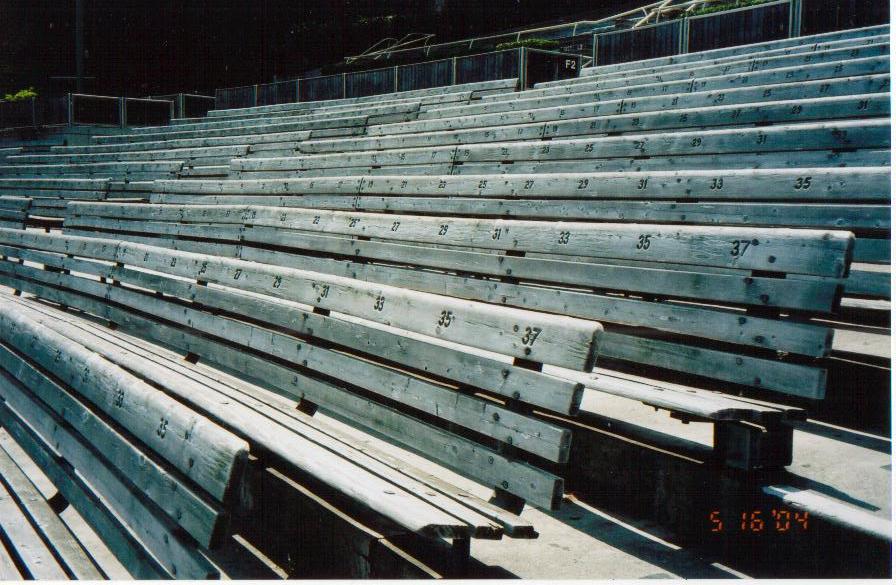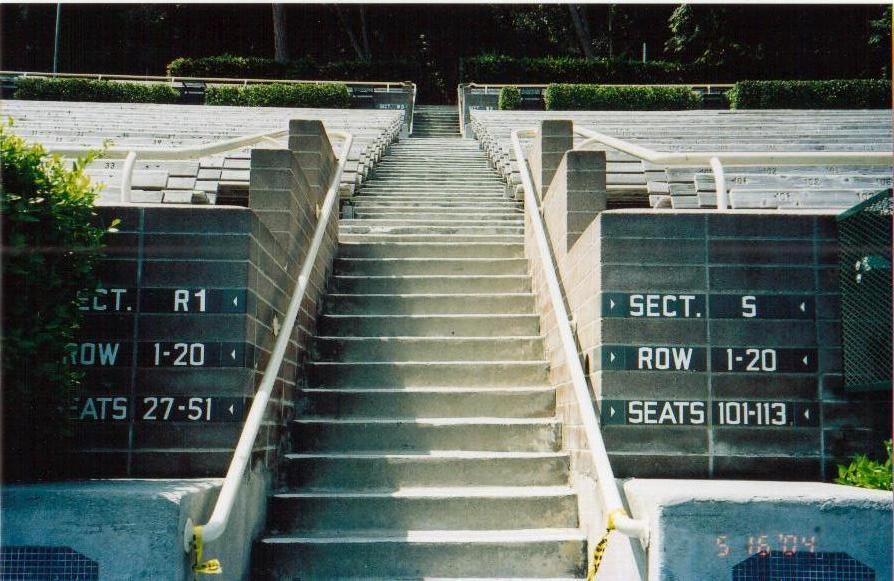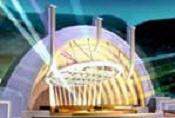Navigation:
| Performers and Performances | |
| Various Quotes | |
| Bibliography |

|
The Basic Architecture -
|
|
The Specifics - In 1922, the Bowl's first stage
was constructed and consisted of a simple wooden platform with a canvas top.
Patrons sat on moveable benches. In 1926, a cooperative society of 33 local Los
Angeles architects, known as Allied Architects, built the Bowl's first arched
proscenium. The curved wooden frame consisted of two different shapes: a low
elliptical arch in the background with a circular arch inside, framing the
musicians. Sea and landscape paintings covered the shell's face and
inside back wall. The acoustic problems
found in the design caused the shell to be torn down at the end of the season. The well-known Pasadena architect Myron Hunt created a blueprint for the amphitheatre that was based on concepts from his earlier design of another Southern California landmark, the Rose Bowl athletic stadium. Hunt's balloon shaped seating area rose up from the stage, outlined by gracefully curving stairways all around. Dressing rooms and storage areas were hidden from sight, underneath a 135-foot by 90-foot stage. Construction began on March 4, 1926, and was completed in time for the season's opening production in July. The Hollywood Bowl is the largest natural amphitheater in the United States. Seating nearly 18,000 patrons, the venue has had four shells since its beginnings in 1922; the new shell becomes the venue's fifth. Lloyd Wright, the eldest son of Frank Lloyd Wright, designed two shells for the Hollywood Bowl. He was commissioned to design a shell for the 1927 symphony season after having designed several sets for theatrical productions at the Hollywood Bowl. He used wood from the dismantled Robin Hood set and built a pyramid-shaped structure intended to both enhance the Bowl's acoustics and complement the rustic setting. The initial Lloyd Wright design was intended only as a temporary structure and was used for one season. |
|
1928 Curvilinear design
The engineering firm of Elliott, Bowen and Walz designed the fourth shell in 1929. Allied Architects constructed the shell, which preserved the visual essence of Lloyd Wright's 1928 design, but substituted a semicircle for Wright's elliptical form. Made of transite panels covering a steel frame, the massive, 55-ton shell was designed on a track system. The shell could be moved off the stage area to allow for theatrical staging to be built for a specific performance. From the beginning, the curved shape of the shell caused serious acoustic problems, including focused sound randomly returning to the stage. The acoustical problems instigated an ongoing commitment by Bowl directors to achieve the best possible sound inside the amphitheater. 1970 Sonotube design Frank Gehry
In 1980, the sonotubes were removed and Gehry designed hollow fiberglass spheres which were hung within the Bowl shell in a carefully-calculated arrangement. While helpful, the spheres did not solve acoustical issues that continued to be problematic for the venue. In addition, the 1929 shell was unable to accommodate a full orchestra; nearly 1/3 of the musicians sat outside of the shell affecting the quality of sound produced. |
|
Diagram of the Shells: 1927,1928,1929
Architects Hodgetts + Fung Design Associates and Executive Architects Gruen Associates were engaged to prepare a renovation plan that would involve reconstructing the old shell structure, built in 1929. Funded by voters through the passage of Proposition A, the new shell plan is designed to bring the venue up to current standards, improving shell acoustics and artist facilities while preserving the historic look that has become synonymous with the Hollywood Bowl. Specifically, the shell project will: preserve the recognizable, 1920s Modern concentric ring look of the existing shell, dramatically improve the shell's acoustics, create 30% more stage space to accommodate a full orchestra inside the shell, allow lighting and sound technology to be integrated into the design, restoring the shell's clean, uncluttered look |
 Lloyd Wright
Lloyd Wright 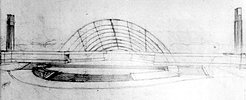

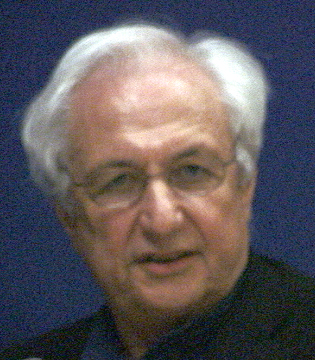 Numerous
attempts to improve the 1929 shell's acoustics were undertaken over the years.
In 1970, architect Frank Gehry and acoustician Christopher Jaffe devised
an inexpensive, temporary solution by creating "sonotubes," manufactured
cardboard forms that looked like concrete columns. Their arrangement of tubes
inside the shell and extending along the outer wings enhanced the sound but
altered the look of the shell, disguising the Bowl's famous curved shape. The
sonotubes remained in place until 1980. The development
of the area continued to disturb the natural amphitheater's acoustics. The
addition of the Hollywood freeway in 1952, the grading of hillsides, development
of homes, and other factors began to surround the once tranquil grounds with ambient
noise.
Numerous
attempts to improve the 1929 shell's acoustics were undertaken over the years.
In 1970, architect Frank Gehry and acoustician Christopher Jaffe devised
an inexpensive, temporary solution by creating "sonotubes," manufactured
cardboard forms that looked like concrete columns. Their arrangement of tubes
inside the shell and extending along the outer wings enhanced the sound but
altered the look of the shell, disguising the Bowl's famous curved shape. The
sonotubes remained in place until 1980. The development
of the area continued to disturb the natural amphitheater's acoustics. The
addition of the Hollywood freeway in 1952, the grading of hillsides, development
of homes, and other factors began to surround the once tranquil grounds with ambient
noise. 